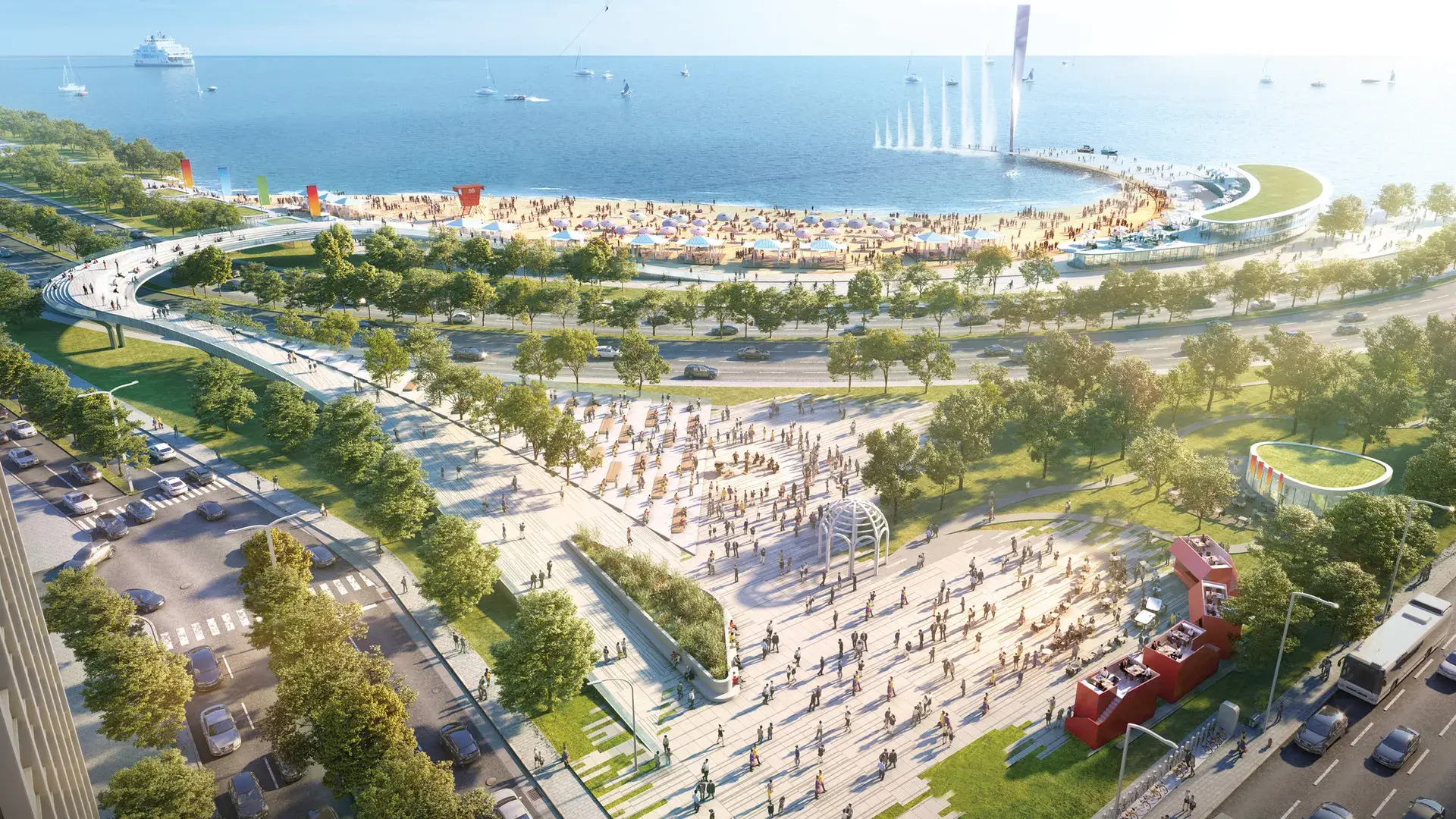Michigan Avenue is figuratively and literally a through line of Chicago, stretching more than 12 miles from the waterfront Lake Shore Drive to the southern suburb of Dolton. Despite an impressive throng of luxury retail stores and hotels—Saks Fifth Avenue, Chanel, the Ritz Carlton—the street faces financial and safety concerns. Global architecture firm Gensler is slated to address these challenges through a major renovation of the street, which has not been updated since the 1990s.
COVID-19 significantly impacted North Michigan Avenue. According to Gensler, the effects included nearly seven million fewer visits per year, a 74 percent increase in crime, and a 25–35 percent decrease in property tax revenue. While the street is making strides toward pre-pandemic levels, retail vacancies still top 30 percent. A recent op-ed in the Chicago Sun Times declared Michigan Avenue is a display of “homelessness, mental illness, crime.”
To realize the street’s full potential, Gensler is partnering with Bob Wislow and Camille Julmy, founders of Chicago real estate agency Parkside Realty and the forces behind some of Chicago’s biggest projects, including One Financial Place. Gensler plans to tackle a northern portion of the main thoroughfare between Chicago Avenue and Oak Street Beach using a pedestrian-focused approach. Sidewalks will be broadened, allowing space for food and beverage kiosks, lighting fixtures, interactive public art, green space, and stages primed for street performances.
The firm also plans to improve visitor experience at Jane Byrne Park. A tree canopy will provide shade for a set of colorful tables. There’s a geometric water feature, dubbed “The Water Feed.” A new cafe, Jane’s, will inhabit the park’s key feature, its historic water tower. Projection art will illuminate the water tower and fountains at night, complementing the renovations’ consistently creative spirit.
The design invites movement along North Michigan Avenue. The outermost lane of traffic bordering the park will be removed to create a walking path, so that pedestrians can continue their journey along the diverse attractions lining the street. Among these, adjacent to the park and just east of the Avenue toward the Museum of Contemporary Art, a new “arts district and restaurants row” will emerge at Seneca Park. Surface parking will be reduced for public art, while the Eli M. Schulman playground will be preserved and enhanced.

Finally, Gensler intends to transform the northern anchor of the street: Oak Street Beach and the Drake Hotel. A bridge will connect the high-end hotel to the sandy summer hot spot. Awnings and trees will be located at the hotel’s Avenue-facing elevation, while a rooftop terrace will afford views out toward the lake. Additions to the beach include new sand, a waterfront restaurant perched on a wooden deck, and beach features including cabanas, lounges, and umbrellas as well as a parasailing lodge. A pedestrian tunnel running under Lake Shore Drive to the beach will be lined with LED artwork.
Gensler does not take this renovation lightly. In a statement, the firm stated that North Michigan Avenue is “urgently poised for reinvention” as “Chicago’s economy, job market, global reputation, and culture depend on it.”
While renderings have been released, Gensler has not indicated a timeline for the urbanism project.

